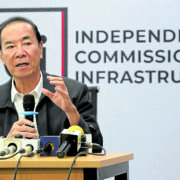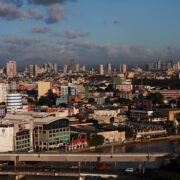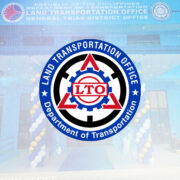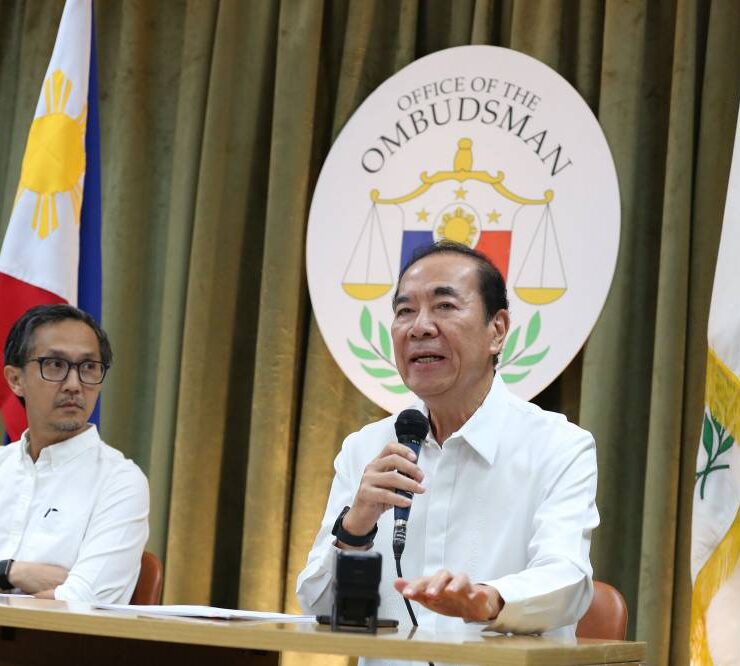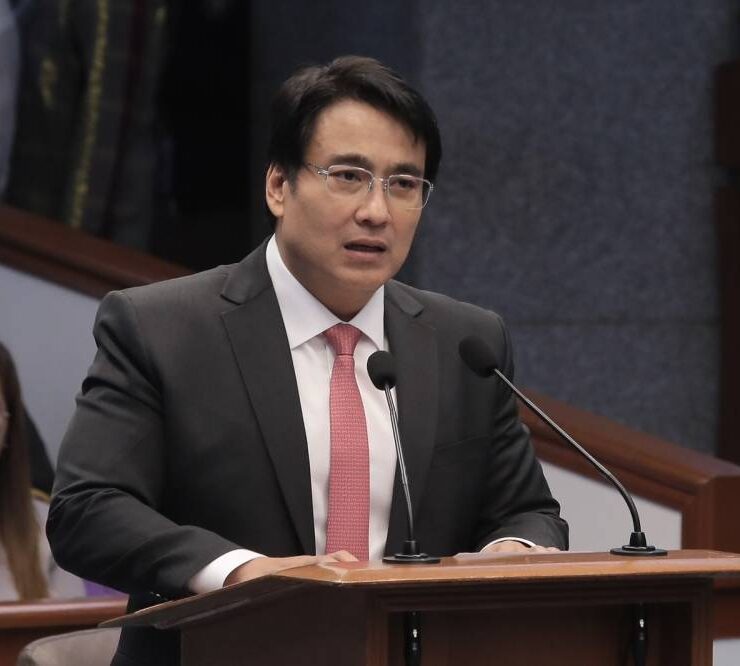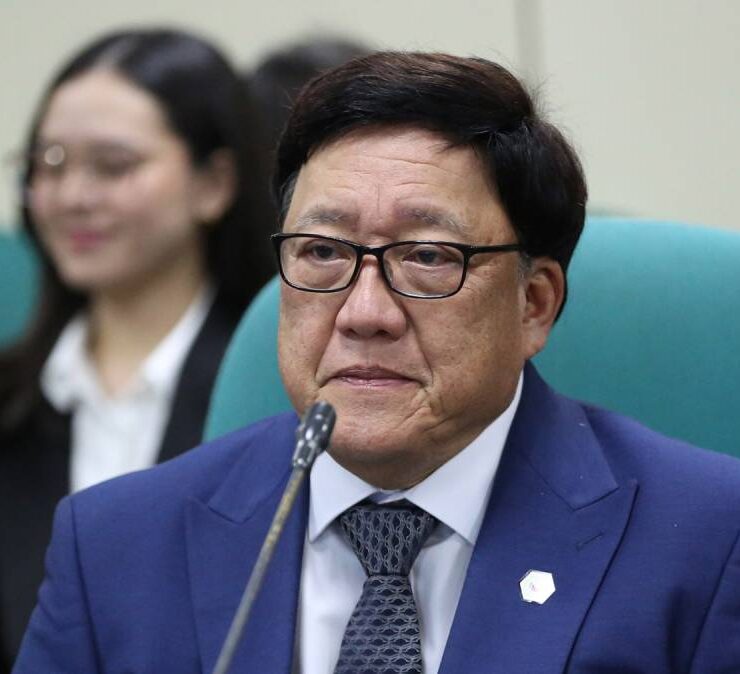UP experts question DPWH role in disaster risk reduction

Policy experts from the University of the Philippines (UP) are urging Congress to strip the Department of Public Works and Highways (DPWH) of its disaster risk reduction (DRR) functions, citing the allegations of massive corruption hounding the agency.
In a policy note released on Friday, the UP National College of Public Administration and Governance (NCPAG) called on lawmakers to “review the mandate of the DPWH, rightsize its operations, and transfer its DRR functions to a dedicated agency, such as the proposed Department of Water Resources, identified as a priority legislation by the President.”
“The data presents an undeniable case: the DPWH bears a massive responsibility for disaster risk reduction, but it is constrained by a legacy structure that is not only insensitive to natural hazards, but also susceptible to corruption,” they said.
The DPWH is currently facing heightened scrutiny over anomalous public works projects that are either substandard or declared finished only on paper, their budgets milked for kickbacks under scheme among its officials, private contractors and lawmakers who got maneuvered to have the projects funded.
An NCPAG analysis of the DPWH budget from 2023 to 2025 showed that the agency’s DRR-related allocations have consistently amounted to 70 percent to 80 percent of its total budget.
Roads as ‘flood interventions’
This, they said, included not only funding for the official flood management program but also its budget for roads, bridges, evacuation sites and operation centers.
The current budget framework for the DPWH has kept these different programs in different silos, the NCPAG said, thus “breeding inefficiencies and potential redundancies in implementation that ultimately weakens (our) long-term resilience.”
The experts took particular issue with the DPWH budget for road infrastructure, which they found to be the “single largest line item for flood mitigation (which) is not officially counted as such.”
A special provision in the General Appropriations Act (GAA) stipulates that all road projects must provide adequate drainage systems and must take into consideration the increase in the volume of rainfall—“practically classifying all road projects as flood mitigation interventions,” they noted.
In 2025, funding for the construction, repair and rehabilitation of roads reached P541.98 billion, or half of the DPWH’s entire 2011 budget and more than double the budget of the combined official and nonofficial flood control programs in 2024.
“This means that DPWH has, for decades, executed the largest flood control projects in the country through its road programs. Unfortunately, this correlation is rarely looked into, if not, glossed over entirely in fiscal reporting and project monitoring and evaluation,” the NCPAG said.
‘We’re kept in the dark’
Moreover, road projects “are not primarily evaluated on their flood control performance despite the presence of flood-specific guidelines and standards, making it extremely difficult to hold anyone accountable when drainage components do fail,” they added.
The same goes for bridges, which are mandated by law to incorporate seismic standards and a core component of the government’s effort to reduce the impact of natural hazards.
But like flood control projects, funding for bridges are now spread across three programs: the official DPWH bridge program, the Convergence and Special Support Program, and foreign-assisted projects.
Evacuation centers
“The resulting phenomenon is where we were kept in the dark. The DRR and climate change adaptation dimension of roads and bridges are obscured and concealed under generic headings of ‘roads’ and ‘bridges,’ misleading us into thinking that roads, bridges, and DRR-related projects are mutually exclusive priorities,” they said.
“Since roads and bridges are assessed mainly in terms of connectivity and mobility rather than on their resilience to disasters and climate change factors as should be intended, it understates the scale of actual government spending on disaster risk reduction and climate change adaptation, skewing accountability,” the NCPAG added.
Apart from hard infrastructure, the DPWH is also involved in the construction of evacuation centers and DRRM operations centers, which “has grown quickly” under President Marcos’ term, they said.
In the 2025 national budget, the DPWH listed 1,869 evacuation centers and 158 operations centers with funding of P3.04 billion and P245 million, respectively. That translates to an average of about P3 million per evacuation center and P2.5 million per operations center.
Over the three-year period from 2023 to 2025, the agency earmarked a total of P7.7 billion for 2,535 evacuation centers and P423 million for 168 operations centers.
But while the number of projects for 2025 surged, the total budget of P3.28 billion did not rise proportionally. This suggests that the agency may be building smaller, lower-cost facilities—or “it could point to something else entirely,” the NCPAG authors said.
Despite all this, they noted little improvement in disaster resilience, citing persistent flooding and high levels of infrastructure damage in provinces, such as Albay, Oriental Mindoro, Ilocos Norte and Cagayan—all areas that already host hundreds of flood control projects.
“As the agency that has been receiving the highest funding for DRR in the past years, its investments in infrastructure are certainly suspect and wanting. Its flood control projects alone are supposed to abate damage, but with many of these projects being substandard, if existing at all, it is no wonder that the impact of flooding to communities remains high,” they said.
Repeated pattern
In Albay alone, there been P16.2 billion spent on 273 flood control projects there since 2018. “Yet even with this investment, the province lost as much P7.3 billion in infrastructure damage across a six-year period (2017-2023), the highest in the country,” the NCPAG noted.
This pattern, they added, “repeats across the entirety of the Philippines. Oriental Mindoro’s allotment of P11.3 billion across 138 flood control projects failed to avert P4.1-billion infrastructure-specific damage; not counting other losses in agriculture, human lives, and livelihood.”
That being said, they argued that the DPWH “cannot perform its DRR functions if it continues to be hampered by legacy structures that are not risk-sensitive and highly susceptible to corruption.”
The NCPAG policy note was authored by a group composed of Kristoffer Berse, Kim Robert de Leon, Micah Paula Milante, Francis Miguel Garcia, Mape Estellena, Olivia Bondad, Ramon Caballero, Maria Hontanosas, Eugene Beltran, Ajay Caingat, Leila Alejandria, John Coby Cabuhat, Thea Panares and Magjorie Avila.




